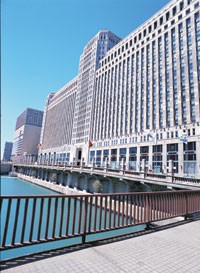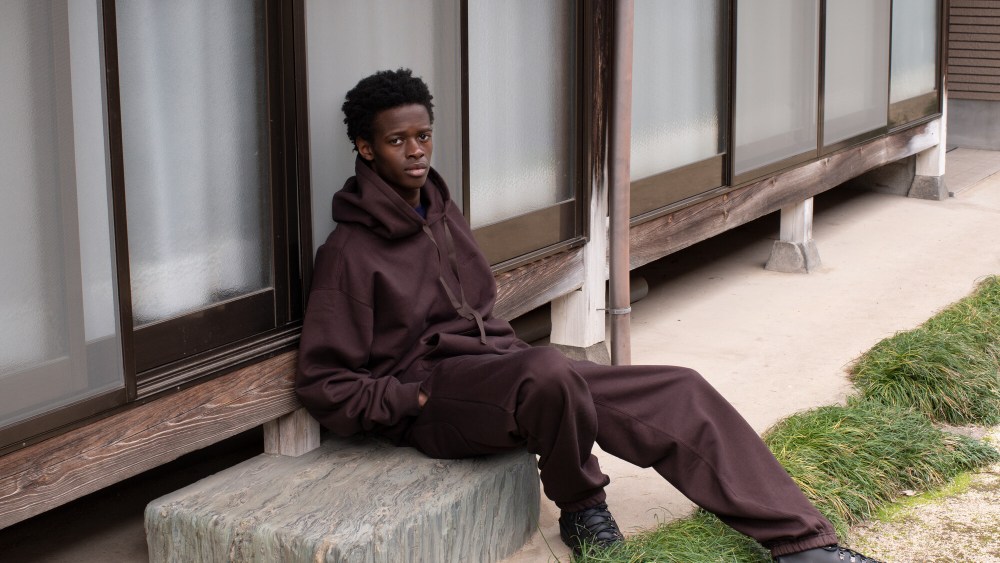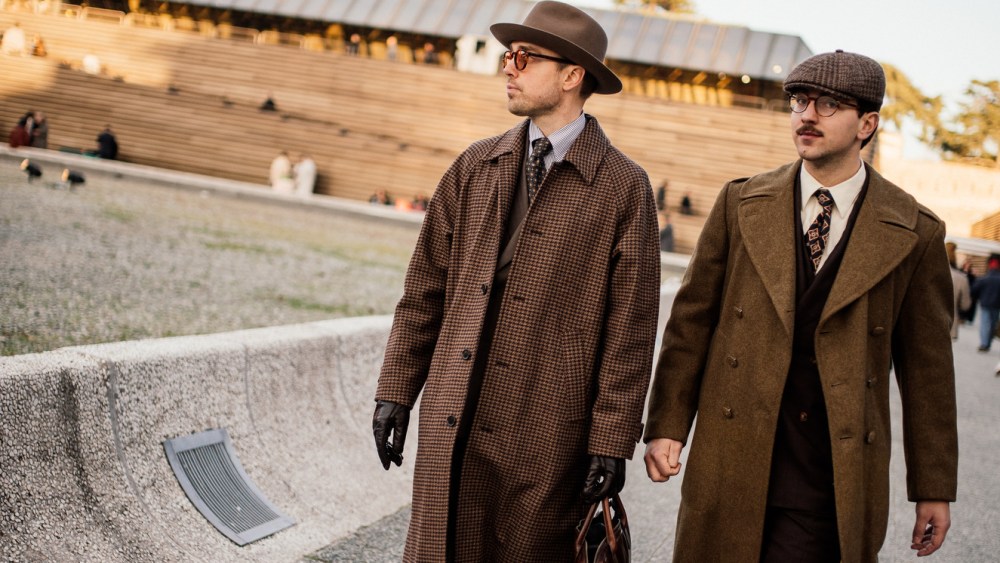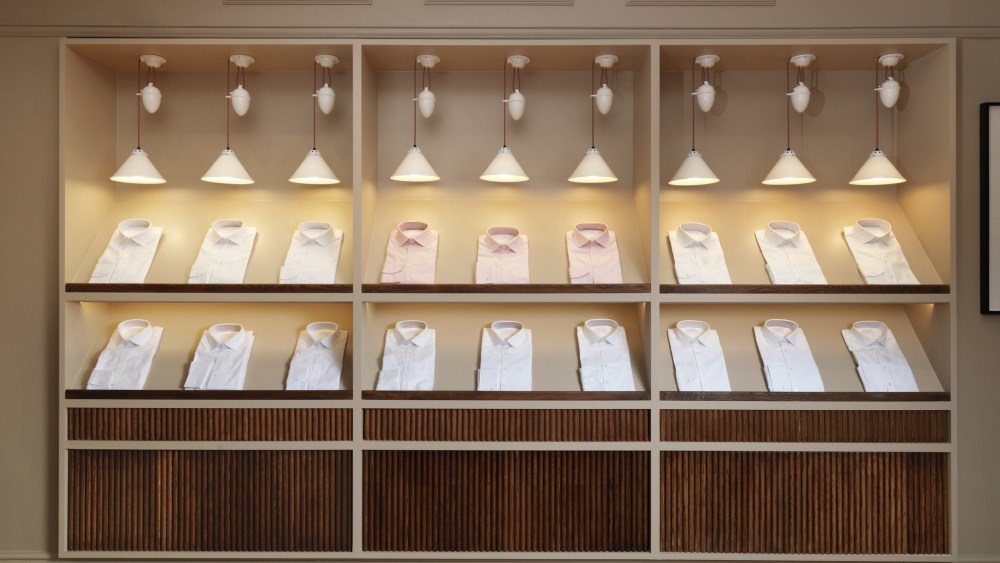They have big shoes to fill but they’re up to the task.
This edition of the Chicago Collective will mark the first without Bruce Schedler, the executive who revamped what was a sleepy regional menswear show into the must-attend market for independent stores from around the country.
Although Schedler officially stepped aside last March, he remained a consultant and was still a presence at the August edition, walking the floors and catching up with vendors and retailers. But now, he’s officially retired and has passed the torch to his two longtime colleagues: Monique Kielar, vice president of marketing, apparel, and Danielle Owen, vice president of sales, for the Chicago Merchandise Mart, which runs the show.
“Bruce’s contract was through 2025, but between the company and him, they decided it was time for him to depart and go enjoy his grandchildren,” Kielar said. “Obviously we value the relationship we had with Bruce and everything that he’s contributed. But it’s time for me and Danielle to kind of fly at this point.”
Kielar said not to expect too many changes at this edition. “We just want to continue with the positive, upward momentum that we have right now,” she said. “We have to live through this first show and see how things go. I think maybe August will be a bigger reflection of Danielle and I on our own, because we’ll get to plan everything from start to finish.”
Helping them with the show is a new hire, Brady Sexson, who will be working with Owen on exhibitor relations and sales.
Sexson is sure to learn first-hand the frustration of many vendors who have been unable to get a spot on the floor. Although the company added over 30,000 square feet on the fourth floor last summer, there’s still a waiting list as long as the 500 or so brands that have managed to get a spot.
Kielar said the show, which runs Saturday through Tuesday, was actually able to add around 50 new brands this time around, many of them part of the multibrand showrooms that will be housed on the fourth floor. The Italian Trade Agency, which brings more than 60 brands to Chicago, also has some new faces this time, she said. Among the newcomers are Nanushka, Wax London, SNS Heming, Mazzarelli Shirts, MNC Atelier and Payne Stewart Collection.
“We’re constantly trying to get in new brands,” she said. “It’s just so difficult with the dropout rate — nobody’s leaving and the space isn’t available.”
Even so, Kielar said, retailers seem happy with the mix, even if they see the same names every six months. “Just because the same brands are here doesn’t mean that it’s the same show every season,” she said. “We’re trying to do new events, step it up with different presentations and make it look fresh and new. And with a sprinkling of 50 new brands, I think it’ll leave an impact on buyers.”
In addition to the espresso bar and aperitivos from the Italian Trade Agency, breakfast and lunch from Barbour, coffee from Blue Industry and bloody marys from AG, the opening-night party on Sunday will be sponsored by Mac Jeans this year. The event will serve to promote the collaboration between Mac and the German car company Ruf. A special installation will be set up in the foyer to celebrate the partnership, featuring two ultra-luxury cars and the Ultimate Driver Pants and Unique Vintage by Mac collections, Kielar said.

Mauro Blasi is one of the Italian brands that will show at the Collective.
Courtesy of Mauro Blasi
And the Italian Trade Agency will also hold its event Monday night at Untitled Super Club.
To draw retailers to the fourth floor, Kielar said the show will create events on that floor similar to those on the larger, more-established seventh floor. “We looked at our numbers from the last show,” she said, “and saw that 75 percent of our buyers made it to the fourth floor. So that’s promising. We’re hoping those numbers are even higher this time.”
Although the Italian contingent is highly visible at the show, there’s another group of brands from the U.K. that also has a strong presence.
Paul Alger, international business director for the UK Fashion and Textile Association, said some 37 men’s brands and an additional eight textile companies will show at the Collective. “The big difference is that the Italians get a lot of government funding, whereas the Brits get absolutely none,” he said. Instead, the UKFT, a private industry association, has a “very small maintenance grant to pull together a group,” he explained.
“Most of the companies show season in, season out — they’re very committed. And they’re showing on their own buck. So this is a commitment on the U.S. market. And the U.S. market is the number-one export market for the U.K., after the European Union and it’s not very far behind the EU at the moment.”
The U.K. companies, which include Alan Paine Knitwear, Barbour, Belstaff, Duchamp London, John Smedley, Orlebar Brown, Pantherella and Paul Smith, remain committed to the show, with many being on the floor for a decade or more and others joining in the last four or five years. There are also textile companies such as Holland & Sherry or Huddersfield Fine Worsteds that work with retailers who have custom offerings to provide fabrics.
Alger said that like the Italian and U.S. companies, there are also other U.K. brands that would like to participate in the show, but can’t get a booth. “Everybody else wants to be at the show, and there isn’t space for them. But we do manage to occasionally squeeze a new company in.”

Paul Smith will be among the British brands at the show.
Courtesy
Alger believes that U.S. and Canadian retailers are “really big fans of heritage, British craft and quality manufacturing. And so we can see the buyers going around the show looking at the Italians — they love the Italian product — but there is a specific customer that really loves the U.K. look. What the U.K. brings to the market is markedly different from the rest of the European Union. There is more heritage. There is more family input, there’s a lot more knitwear, some of it’s a little bit quirkier.”
And Chicago is the place where orders are written, he said, drawing the U.K. brands back to the city year after year.
So despite some hesitation about potential tariffs that may be imposed by the new administration and other macro issues, Alger said he and the British brands remain upbeat. “The perception is that the U.S. economy is buoyant and that the future looks bright and optimistic,” he said. “We’re looking forward to a good and very positive show.”




